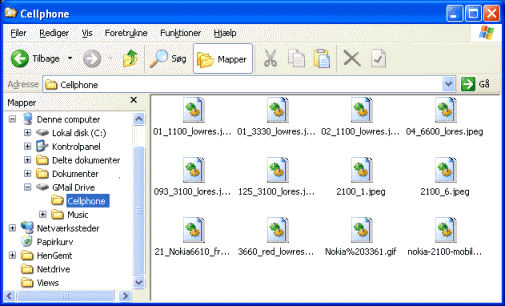GMail Drive
| |
GMail Drive shell extension GMail Drive creates a virtual filesystem on top of your Google Gmail account and enables you to save and retrieve files stored on your Gmail account directly from inside Windows Explorer. GMail Drive literally adds a new drive to your computer under the Ever since Google started to offer users a Gmail e-mail account, which includes storage space of 6000 megabytes, you have had plenty of storage space but not a lot to fill it up with. With GMail Drive you can easily copy files to your Google Mail Account and retrieve them again. Because the Gmail files will clutter up your Inbox folder, you may wish to create a filter in Gmail to automatically move the files (prefixed with the Please note that GMail Drive is still an experimental tool. There's still a number of limitations of the file-system (such as total filename size must be less than 65 characters). Since the tool hooks up with the free Gmail Service provided by Google, changes in the Gmail system may break the tool's ability to function. I cannot guarantee that files stored in this manner will be accessible in the future.
Be aware that support for this tool may suspend at any time if Google decides to block its use. Installation RequirementsInternet Explorer 5 or betterInstallation Guide
Useful LinksOriginal idea by Richard JonesDownload Files GMail Drive v1.0.13 - download site #1 (Softpedia) |
GMail Drive
Copyright 2004 - 2008 by Bjarke Viksoe
GMail Drive is a Shell Namespace Extension that creates a virtual drive in the Windows Explorer, allowing you to use your Google Mail account as a storage medium.
It allows you to do basic file manipulation, such as copy and delete, on files inside the GMail folder. Because it is a Shell Extension, the interface you work in is Windows Explorer itself.
GMail files are physically stored as e-mails on your Google Mail account. The files are stored in mail attachments, and the filename and file information (such as filesize) is stored in the message subject line.
GMail Drive has already been installed on your computer. All you need to do now, is to browse to the GMail Drive entry under your My Computer folder in the Windows Explorer.
GMail Drive - Gmail Shell Namespace Extension
Copyright(C) 2004 - 2008 Bjarke Viksoe
This software, including all accompanying files, is provided "AS IS" and without any warranties as to performance or merchantability or any other warranties whether expressed or implied.
Because of the various hardware and software environments into which the GMail Drive software (this Software) may be put, NO WARRANTY OF FITNESS FOR A PARTICULAR PURPOSE IS PROVIDED.
Good data processing policies suggest that any program should be thoroughly tested with non-critical data before relying on it. The user assumes the entire risk of using this program.


沒有留言:
張貼留言
注意:只有此網誌的成員可以留言。